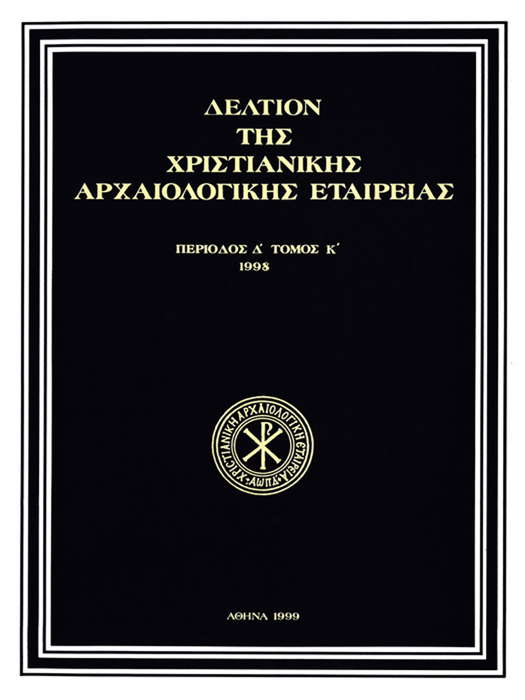Μάστορες, πρωτομάστορες και μηχανικοί των μεσαιωνικών οχυρώσεων της Ρόδου

Περίληψη
Η οχύρωση της Ρόδου, όπως συνάγεται από τις πηγές, ήδη από τον 13ο αιώνα ήταν αρκετά ισχυρή. Το γεγονός αυτό οι Ιωαννίτες το εκμεταλλεύτηκαν, όταν από το 1309 έγιναν κύριοι του νησιού. Η πόλη άρχισε να επεκτείνεται προς τα νοτιοδυτικά της βυζαντινής οχύρωσής της από το δεύτερο μισό του 14ου αιώνα. Αυτή η διαδικασία με διαδοχικές επεκτάσεις και ενισχύσεις συνεχίστηκε ως περίπου τα μέσα του 15ου αιώνα. Οι οικοδομικές εργασίες που αναλήφθηκαν ως τα τέλη του 15ου και τις αρχές του 16ου αιώνα αφορούσαν μόνο την ενίσχυση των τειχών και τη διαμόρφωση προμαχώνων. Σε όλες αυτές τις εργασίες χρησιμοποιήθηκαν τόσο ντόπιοι πρωτομάστορες, όπως μαρτυρά σχετική εντοιχισμένη μαρμάρινη πλάκα στα τείχη της Ρόδου, αλλά και μηχανικοί από τη Δύση, κυρίως Γάλλοι και Ιταλοί, όπως μπορεί να διαπιστωθεί από τις αρχειακές μαρτυρίες του Ιωαννιτικού αρχείου, οι οποίοι εκπονούσαν σχέδια και επέβλεπαν τις κατασκευαστικές εργασίες.
Λεπτομέρειες άρθρου
- Πώς να δημιουργήσετε Αναφορές
-
ΚΟΛΛΙΑΣ Η. Ε. (1999). Μάστορες, πρωτομάστορες και μηχανικοί των μεσαιωνικών οχυρώσεων της Ρόδου. Δελτίον της Χριστιανικής Αρχαιολογικής Εταιρείας, 20, 149–164. https://doi.org/10.12681/dchae.1203
- Ενότητα
- Άρθρα
Οι συγγραφείς των άρθρων που δημοσιεύονται στο Δελτίον της Χριστιανικής Αρχαιολογικής Εταιρείας (εφεξής Δελτίον) διατηρούν τα δικαιώματα πνευματικής ιδιοκτησίας επί των άρθρων τους, αναγνωρίζοντας στο περιοδικό το δικαίωμα της πρώτης δημοσίευσης και στο ΕΙΕ/ ΕΚΤ το δικαιώμα να φιλοξενεί και να διαθέτει το περιεχόμενο των άρθρων στις πληροφοριακές υποδομές του σύμφωνα με τον παρόντα κανονισμό Άρθρα που δημοσιεύονται στο Δελτίον και στις πληροφοριακές υποδομές του ΕΙΕ/ ΕΚΤ μπορούν να χρησιμοποιούνται ελεύθερα με αναφορά στο συγγραφέα και στην πρώτη δημοσίευση για μη κερδοσκοπικούς σκοπούς με υποχρέωση παρόμοιας διανομής. Η Χριστιανική Αρχαιολογική Εταιρεία και το ΕΙΕ/ ΕΚΤ διατηρεί το δικαίωμα να δημοσιεύει, να αναπαραγάγει, να παρουσιάζει στο κοινό, να διανέμει και χρησιμοποιεί άρθρα που δημοσιεύονται στο Δελτίον σε οποιοδήποτε μέσο και μορφή είτε μεμονωμένα είτε ως μέρη συλλογικών έργων, για όλο το χρόνο διάρκειας προστασίας της πνευματικής ιδιοκτησίας και για όλες τις χώρες του κόσμου. Αυτό περιλαμβάνει ενδεικτικά και όχι αποκλειστικά, το δικαίωμα δημοσίευσης των άρθρων σε τεύχη του περιοδικού Δελτίον, αναπαραγωγής και διανομής μεμονωμένων αντιγράφων των άρθρων, αναπαραγωγής ολοκλήρων των άρθρων σε άλλη έκδοση της Χριστιανικής Αρχαιολογικής Εταιρείας, και αναπαραγωγής και διανομής των άρθρων ή περίληψης αυτών με χρήση πληροφορικού συστήματος αποθετηρίου του ΕΙΕ/ ΕΚΤ.


